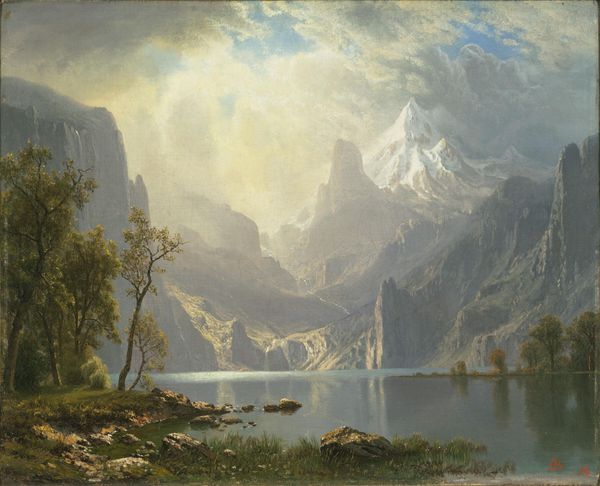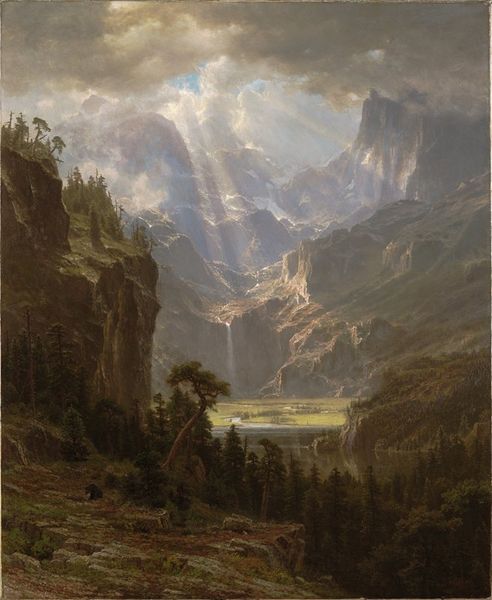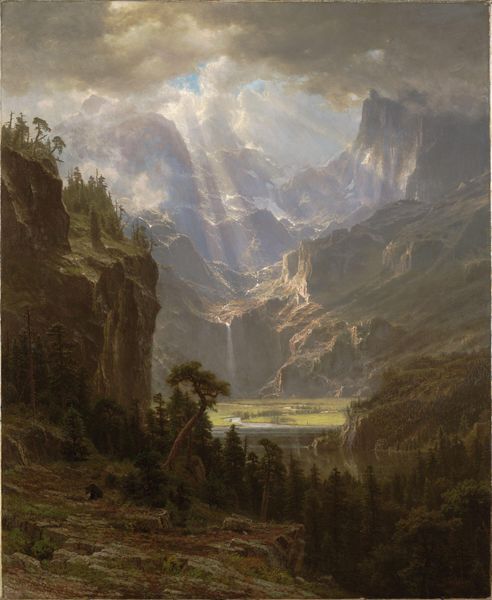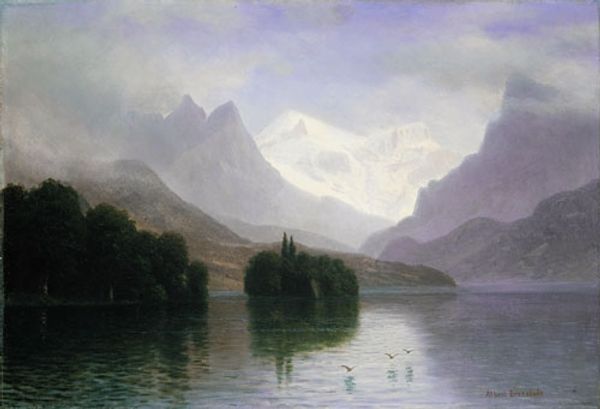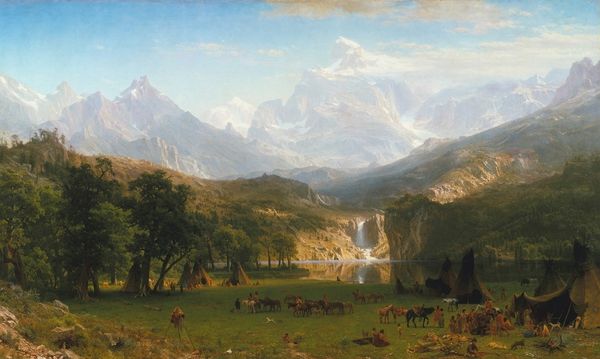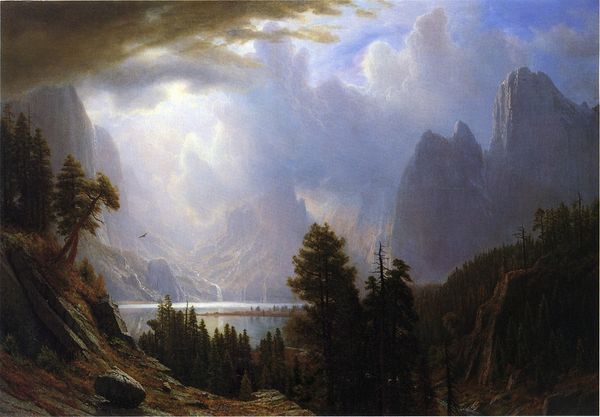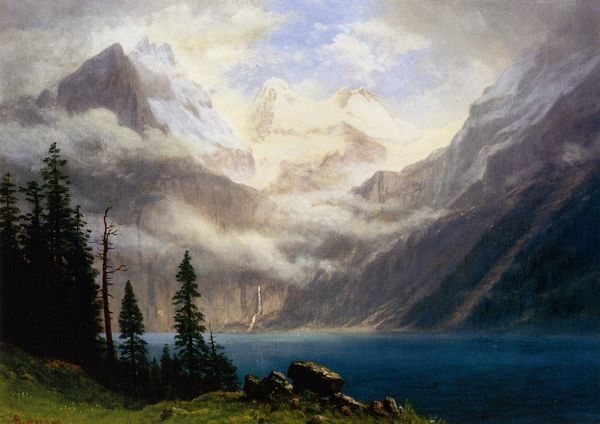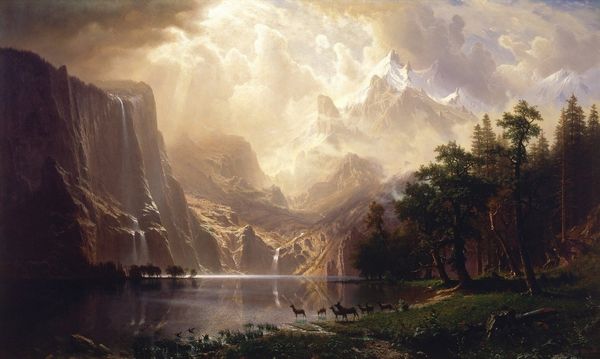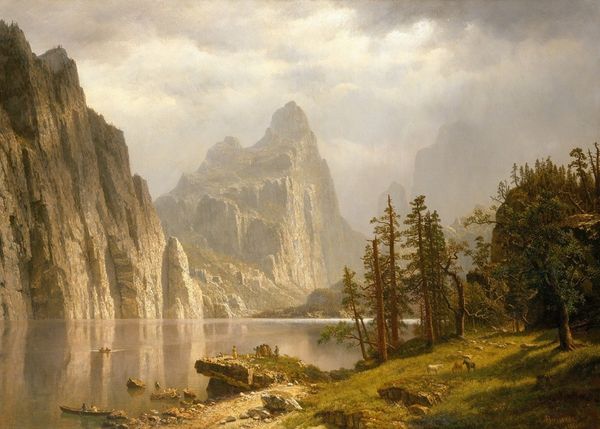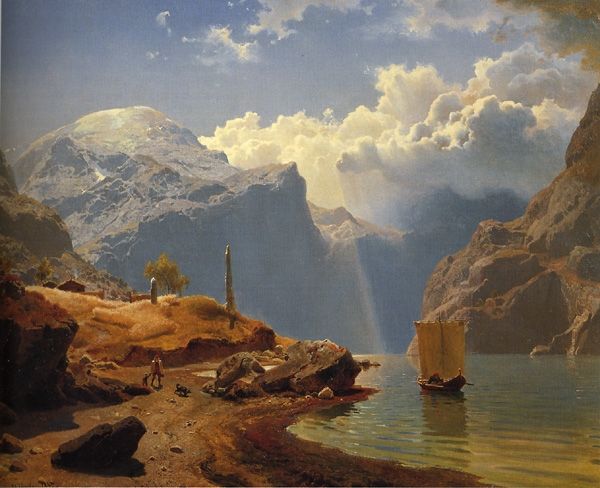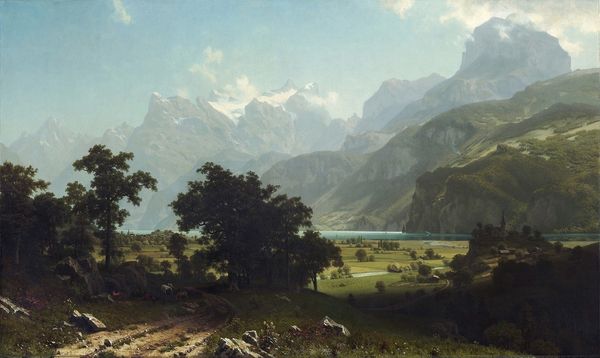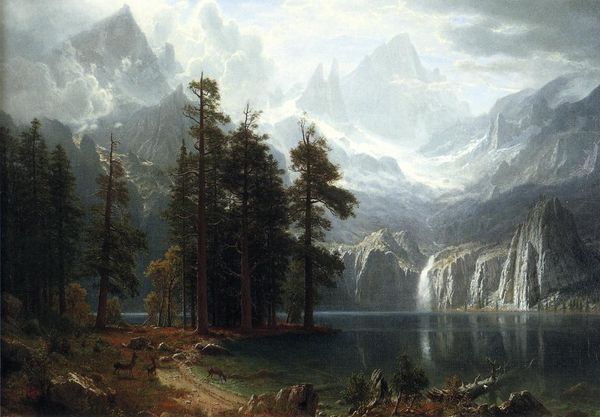
Copyright: Public Domain: Artvee
Curator: Albert Bierstadt’s "In the Sierras," painted in 1868, showcases the majestic allure of the American West, rendered in oil on canvas. Editor: Whoa, instant serenity. It's like stepping into a misty, mountainous daydream. The way the light plays on the water...so calming. Curator: Bierstadt was, of course, a prominent figure in the Hudson River School, a movement deeply intertwined with the Romantic era. Paintings like these shaped perceptions of the American landscape, simultaneously celebrating its beauty and fueling expansionist ideologies tied to Manifest Destiny. How do you read that in the visual language of the piece? Editor: I get this sense of...overwhelming grandeur? I mean, look at those towering peaks. It makes you feel tiny, but also somehow connected. The realism grounds the epic fantasy of the image for me. It makes me consider humanity’s place, dwarfed by nature, while we think we command it. Is it naive to see it that way? Curator: Not at all. That duality, the sublime versus the real, is absolutely crucial. These weren’t simply landscapes, they were carefully constructed narratives. While presenting the allure of untouched wilderness, they simultaneously obscured the realities of Indigenous displacement and the environmental impact of westward expansion. We have to remember who got written out of that picture to preserve an uninhabited frontier. Editor: That's it! I can't shake this little prickle of unease looking at it. Like, is this beauty concealing something? Makes you wonder how many stories are hidden beneath those placid waters...or whose stories have been conveniently cropped out of the view? Curator: Indeed. Bierstadt's artistic skill is undeniable— the atmospheric perspective, the detailing on the rock formations. It all contributed to an image of unspoiled Eden, but also laid bare the inherent paradoxes in how we relate to land, ownership, and representation. Editor: So it's beautiful but thorny. I appreciate seeing the artistry and being reminded of the story behind it – a view of an untouched Eden and our complicated relationship with nature's majesty. Curator: Precisely. It is art historical analysis revealing how beauty could act as a powerful tool, shaping both desire and denial in its time, but more importantly how it is received now.
Comments
No comments
Be the first to comment and join the conversation on the ultimate creative platform.
